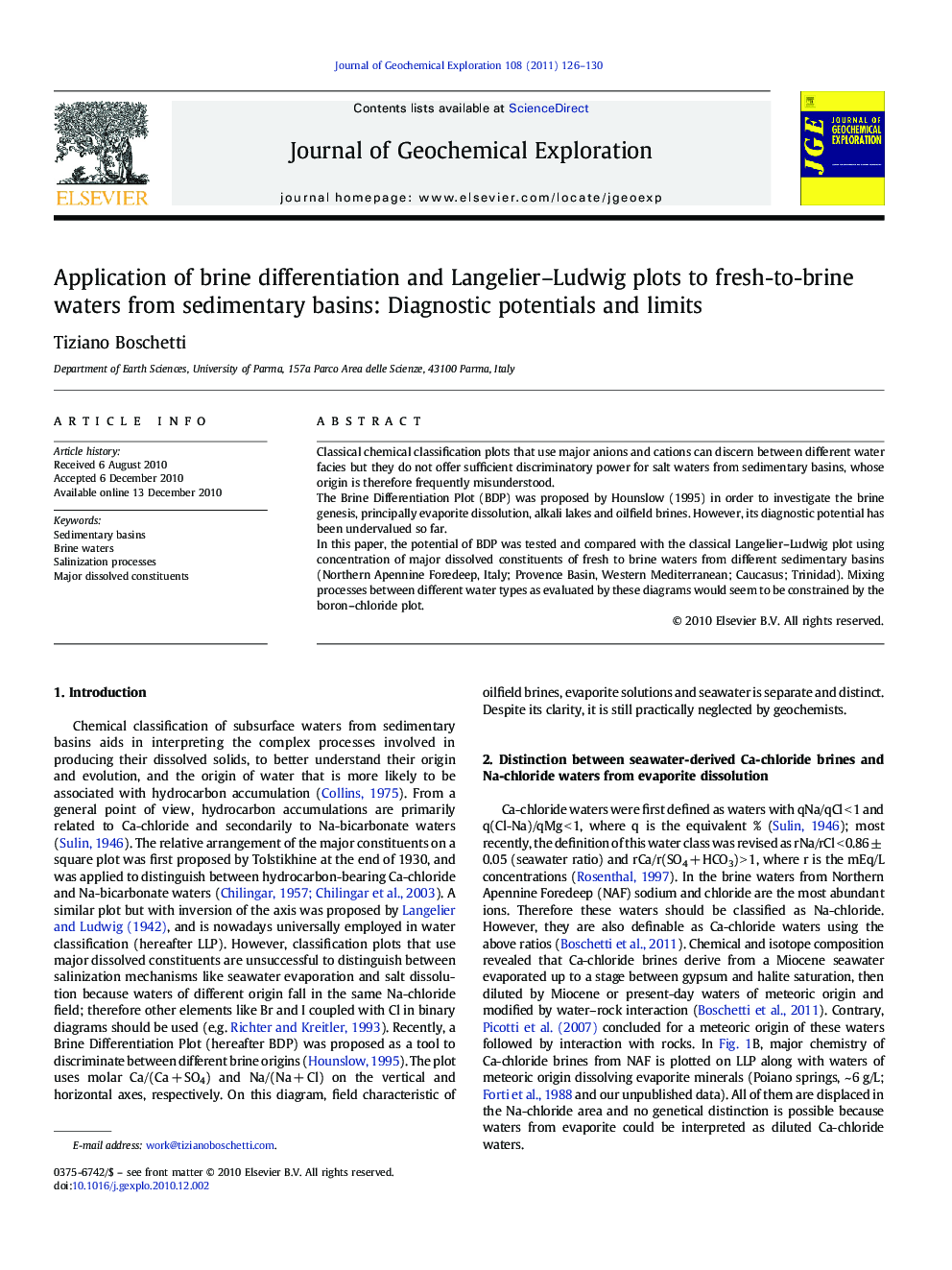| کد مقاله | کد نشریه | سال انتشار | مقاله انگلیسی | نسخه تمام متن |
|---|---|---|---|---|
| 4457945 | 1312644 | 2011 | 5 صفحه PDF | دانلود رایگان |

Classical chemical classification plots that use major anions and cations can discern between different water facies but they do not offer sufficient discriminatory power for salt waters from sedimentary basins, whose origin is therefore frequently misunderstood.The Brine Differentiation Plot (BDP) was proposed by Hounslow (1995) in order to investigate the brine genesis, principally evaporite dissolution, alkali lakes and oilfield brines. However, its diagnostic potential has been undervalued so far.In this paper, the potential of BDP was tested and compared with the classical Langelier–Ludwig plot using concentration of major dissolved constituents of fresh to brine waters from different sedimentary basins (Northern Apennine Foredeep, Italy; Provence Basin, Western Mediterranean; Caucasus; Trinidad). Mixing processes between different water types as evaluated by these diagrams would seem to be constrained by the boron–chloride plot.
Research Highlights
► Brine Differentiation Plot identifies water salinization sources in sedimentary basin.
► Langelier Ludwig Plot identifies different water types in sedimentary basin.
► Efficient use of hydrochemical data in hydrocarbon prospecting and palaeoenvironment studies.
► Distinction of mud volcanoes, shallow Na-bicarbonate waters and co-genetic end-members.
► Recognition of mixing trends and low-high temperature processes affecting boron geochemistry.
Journal: Journal of Geochemical Exploration - Volume 108, Issue 2, February 2011, Pages 126–130